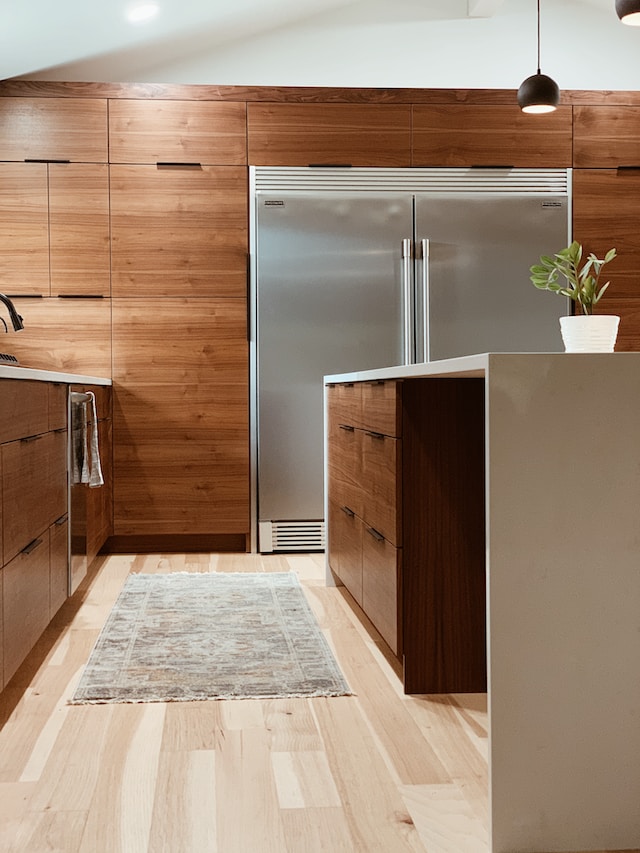Installing cabinets is a major project, but it’s doable with clear instructions and standard tools. Start by finding the highest spot on any wall that will have cabinets.
Use a level and mark a reference line 34-1/2 in. up from the floor (standard cabinet height). You can use this as a guide to hang uppers and lowers.
Measure Your Space
Knowing your space before you start laying out your cabinets is important. Measure the walls and fixed features like doorways, closets, nooks, or other built-in features. Make a drawing of your space and use it as you take measurements.
You’ll also need to know how high your lower cabinets will be. Find the highest spot in your room and mark it on a wall with a level and a tape measure. Then, find the spot on another partition and measure up to determine your cabinet height.
This will help you avoid wasting space and putting things too high or too low. It will also let you know if you need to call a plumber or electrician for sink cutouts or electrical wiring.
Layout the Cabinets
It’s always wise to have a few bundles of composite shims for cabinetry installation Lynnwood WA. They make it easier to level and screw the cabinet frames to the wall.
Please start with the first cabinet and set it on the floor using a high-point laser level line as a guide. Use shims to level perfectly from left to right and front to back.
If it’s a peninsula cabinet, add filler strips between the cabinet run and the wall as needed. A minimum 2-in. wide filler takes care of walls that are out of square and leaves room for doors and drawers to open without rubbing against the cabinets.
When the first cabinet is in place, mark the location of its base on the floor with a pencil and screws to hold it temporarily. Anchor the next peninsula cabinet to permanent blocks on the bottom cut from 2-by blocking, and screwed into the floor after allowing for the cabinet base thickness.
Measure the Drawers
Cabinet drawers are an important part of a cabinet setup and require the same careful measurement as cabinets. Before you buy any hardware, find the manufacturer’s specifications for the drawer slide you want to use and add that to the heights of the cabinet.
Measure from the inside of the door or drawer front, as they’re flat on the backsides. This method is accurate and leaves fewer holes visible outside the frame.
Once you’ve marked the positioning line, clamp the filler strip in place and sand it with a belt sander to match the contour of the wall. Drill pilot holes through the face frame and into the strip using cabinet screws? Not drywall screws. These are thicker and won’t split the wood.
Cut the Openings
Cabinet installation involves a lot of measuring and planning. You will be marking studs, striking cabinet lines on the wall, determining high points in the floor/ceiling, ensuring electrical outlet locations are correct, removing trim that will get in the way of new cabinets and much more.
Use a stud finder to locate the studs in the walls where you will install your cabinets, and mark their location with a pencil. You will also want to install cleats or ledger boards where necessary.
If you are installing upper cabinets, lay out these first to ensure the layout is correct and all the measurements are accurate. This will help you avoid adding shims afterward to achieve a level, plumb installation. Also, note any protruding points requiring special accommodations, like adding filler strips.
Install the Cabinets
Hanging cabinetry is easier than installing it, but you must verify that the cabinets are level and properly positioned. Begin by securing one end base cabinet to the wall with ledger screws or holding screws and using your level to check that it’s both even and plumb.
Repeat the process with the other end of that cabinet and then the rest, checking each one as you go. If a cabinet doesn’t line up with your pencil marks, mark the location of the studs in the wall, then drill above or below the pencil lines and shim until the cabinet is even with the marks.
If you have a small gap between the back of the last cabinet and the wall, close it with a strip of molding cut to match the width of the face frame.




